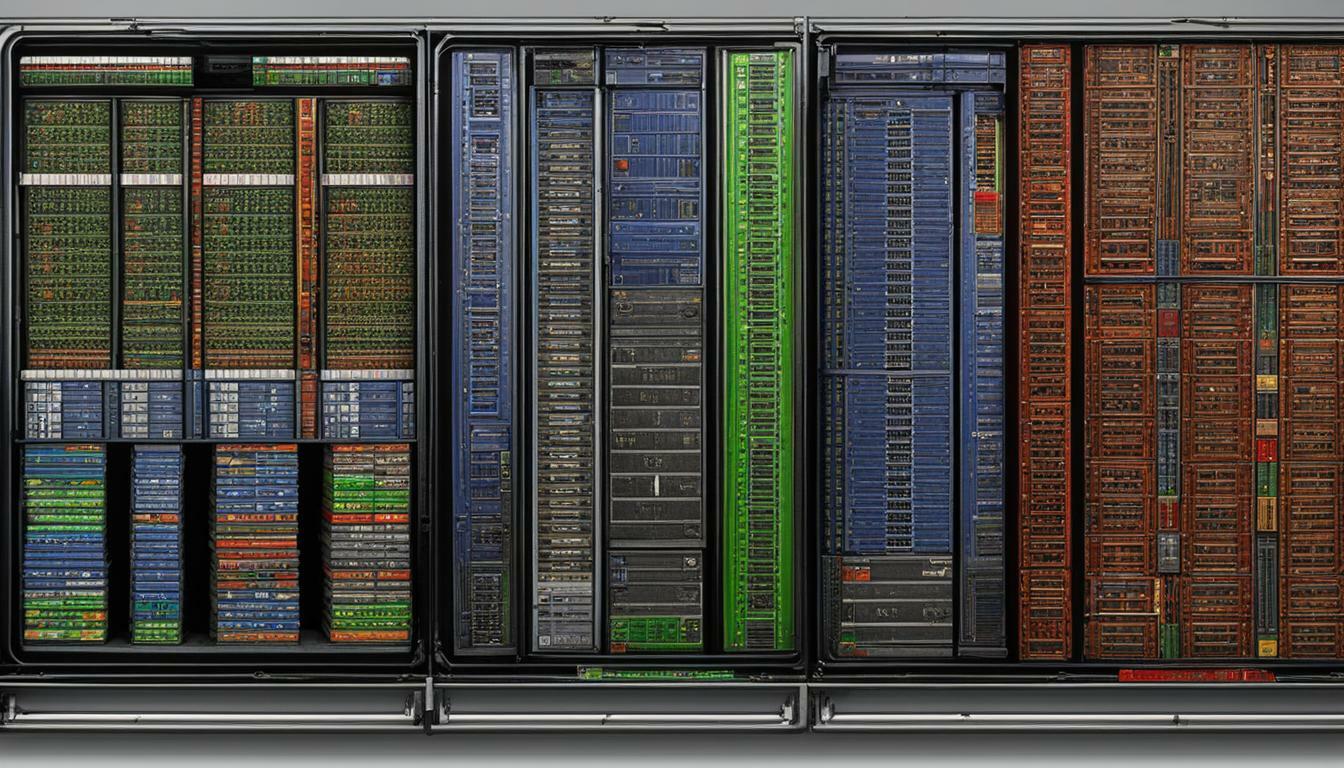Introduction
Caching and buffering are two essential concepts in software systems that play a crucial role in improving performance and efficiency. While they may seem similar at first glance, it is important to understand the fundamental differences between them. In this article, we will delve into the nuances of caching and buffering, exploring how they function, their respective purposes, and why understanding these distinctions can greatly benefit developers and system architects.
Brief overview of caching and buffering in software systems
At its core, caching involves storing frequently accessed data closer to the user or application in order to reduce latency. Imagine a web browser retrieving images from an internet server; instead of downloading the same image repeatedly for each page visit, caching allows the browser to store a local copy for faster subsequent access. This results in quicker load times and improved user experience.
On the other hand, buffering focuses on managing data transmission or processing by temporarily storing incoming or outgoing data streams. When you watch a video online, you might have noticed that sometimes it starts playing immediately without buffering interruptions.
Behind the scenes, buffering plays a vital role by allowing chunks of video data to be pre-loaded into memory before playback begins. This smoothens out any fluctuations in transmission rates and ensures uninterrupted playback.
Importance of understanding the differences between caching and buffering
While both caching and buffering involve temporary storage techniques that enhance system performance, it is crucial to recognize their distinct purposes within software systems. Understanding these differences helps developers make informed decisions when designing or optimizing applications.
By comprehending caching mechanisms better, developers can architect efficient systems that leverage precomputed or frequently accessed results to reduce latency significantly. This knowledge aids in optimizing algorithms by intelligently storing intermediate computations for reuse rather than repeatedly performing expensive calculations.
Moreover, grasping the fundamentals of buffering empowers developers to design robust communication protocols capable of handling varying rates of input/output effectively. Buffering allows data to be temporarily stored, buffering outbursts of incoming data or decoupling the production and consumption rates.
This ensures smooth transmission and prevents bottlenecks, especially in scenarios where data is processed asynchronously. Understanding the differences between caching and buffering is essential for anyone involved in software development.
By recognizing their unique purposes and functionalities, developers can employ these techniques intelligently, resulting in improved system performance and a smoother user experience. In the following sections, we will delve deeper into caching and buffering individually before exploring their distinctions in greater detail.
Caching: Improving Performance in Software Systems
When it comes to enhancing the performance of software systems, caching plays a significant role. But what exactly is caching?
In the world of computer science, caching refers to the technique of storing frequently accessed data closer to the user or application, in order to reduce latency and improve overall system efficiency. The purpose of caching is simple but powerful: it aims to eliminate repetitive computations or data retrieval by keeping precomputed results readily available for future use.
One way caching accomplishes this is by storing frequently accessed data in a location that allows for faster access. Imagine you’re working on a video streaming website, and users constantly request popular videos.
Instead of retrieving these videos from their original source every time they are requested, they can be cached closer to the users. This could be done by storing them on servers located geographically near those users or even utilizing content delivery networks (CDNs).
By bringing popular videos closer to the viewers, latency is reduced and an improved user experience is achieved. Another advantage of caching is that it can save valuable computing resources by eliminating redundant calculations or data retrievals.
Let’s say you have a complex algorithm that performs intense calculations and requires substantial processing time. By employing caching techniques, you can store precomputed results for specific inputs so that subsequent requests with identical inputs can directly retrieve the cached result instead of recomputing it from scratch.
Types of Caching Mechanisms
There are various types of caching mechanisms commonly used in software systems today. Two prominent ones are memory caching and disk caching. Memory Caching: As the name suggests, memory caching involves storing frequently accessed data in RAM (Random Access Memory) for faster access compared to traditional disk-based storage systems.
RAM provides significantly faster read/write speeds, allowing for quicker retrieval of cached data. This type of caching is especially useful when dealing with small to medium-sized datasets that can fit comfortably within the available RAM.
Disk Caching: Unlike memory caching, disk caching utilizes hard disk space for temporary storage of frequently accessed data. Since accessing data from a hard disk is generally slower than accessing it from RAM, this mechanism is most effective for larger datasets that cannot fully reside in memory.
Disk caching works by keeping a portion of the dataset in the cache to reduce the number of times the system needs to read from or write to the slower disk storage. It strikes a balance between faster access provided by RAM and the larger capacity offered by disks.
Buffering
Definition and Purpose of Buffering in Software Systems
In the realm of software systems, buffering serves as a crucial technique to optimize data transmission and processing efficiency. Put simply, buffering involves the temporary storage of incoming or outgoing data streams to mitigate the impact of fluctuations in transmission rates. By utilizing buffers, software systems can effectively manage communication between different components, ensuring smooth and uninterrupted data flow.
The primary purpose of buffering is to address the fundamental challenge posed by varying rates of data production and consumption within a software system. When there is a disparity between these two rates, buffering steps in to bridge the gap.
It acts as an intermediary by temporarily storing data until it can be efficiently processed or transmitted. This not only facilitates better coordination between different parts of the system but also enhances overall performance by preventing bottlenecks that may arise from irregularities in data flow.
Enhancing Data Transmission and Processing Efficiency through Buffering
Buffering plays a critical role in enhancing both data transmission and processing efficiency within software systems. One key advantage it offers is the ability to smooth out fluctuations in transmission rates.
As information travels across networks or channels, there may be instances where the rate at which data is produced exceeds its consumption rate (or vice versa). To avoid overwhelming or stalling either end of this communication process, buffers come into play.
By temporarily storing excess incoming or outgoing data streams until they can be adequately processed or transmitted, buffers allow for a more consistent flow. This ensures that neither side experiences any disruptive delays due to sudden bursts of information or momentary lulls in production.
The buffering mechanism acts as a buffer zone (pun intended) that absorbs these irregularities, creating a steady stream for efficient handling. Furthermore, buffering enables parallel processing by decoupling data production and consumption rates.
In complex software systems where multiple components are involved simultaneously – such as reading and writing data simultaneously from different sources – buffering allows each component to operate at its own pace without being hindered by the others. Data can be temporarily held in buffers until all necessary prerequisites for processing are met, thereby facilitating concurrent operations while maintaining overall system stability.
Different Types of Buffers Used in Software Systems
In software systems, there are various types of buffers designed to handle specific aspects of data flow. Two commonly employed buffer types are input buffers and output buffers. Input Buffers: These temporary storage spaces hold incoming data before it undergoes further processing within the system.
Input buffers act as a receiver for data streams, collecting and queuing information until it is ready for consumption by the relevant components or processes. This allows the system to handle incoming data at its own pace, ensuring that no data is lost or discarded due to a mismatch between production and consumption rates.
Output Buffers: On the other hand, output buffers serve as intermediate repositories for processed or transformed data before it is transmitted to its intended destination or recipient. Once the system completes the necessary computations or transformations on the input data, this processed information is stored in an output buffer until it can be efficiently transmitted without delays or disruptions.
Output buffering ensures that transmission occurs smoothly without interruptions caused by varying rates between processing completion and communication initiation. By effectively managing both input and output buffering within software systems, developers can ensure smooth data flow across different components while optimizing overall performance and efficiency.
Differences between Caching and Buffering
Storage location:
Caching and buffering may both involve the temporary storage of data, but they differ in terms of where this data is stored. Caching operates by storing frequently accessed data closer to the user or application, often in faster-access memory or even on local devices. It acts like a strategic librarian who keeps popular books within arm’s reach or on the nearest shelf.
On the other hand, buffering focuses on holding temporary data during transmission or processing. Picture buffering as a patient traffic controller at an intersection, ensuring a smooth flow of vehicles by briefly holding them before letting them proceed.
Data usage:
The purpose behind caching and buffering also diverges when it comes to how they handle data usage. Caching primarily seeks to enhance performance by reducing latency through storing precomputed or frequently accessed results within easy reach. It functions like a diligent assistant who anticipates your needs by having relevant documents ready before you even ask for them.
In contrast, buffering concentrates on managing varying rates of input/output to facilitate smoother operation. It acts as a reliable mediator that temporarily holds incoming or outgoing data streams, ensuring that they are processed efficiently without becoming overwhelmed.
Lifespan:
Cache entries and buffer contents differ significantly in terms of their lifespan within software systems. Cache entries tend to be long-lived since they persist until they become invalid or are deliberately evicted from the cache due to capacity limitations.
Imagine cache entries as experienced librarians who take pride in maintaining an extensive collection available for visitors’ convenience over extended periods of time. Conversely, buffer contents have a short-lived existence; once consumed during processing or transmission, they are no longer needed and are promptly discarded like used tickets after being admitted into an event.
Conclusion:
Understanding the distinctions between caching and buffering is crucial when examining software systems’ performance and efficiency. While caching focuses on optimizing data access and retrieval by storing frequently used or computed results, buffering specializes in managing varying rates of input/output to ensure smooth transmission and processing.
By harnessing the power of caching and buffering intelligently, software developers can enhance user experience, improve system performance, and create seamless interactions that leave users with a sense of satisfaction and efficiency. So let us embrace these mechanisms with open arms as they navigate us towards a future of faster, more responsive software systems.

